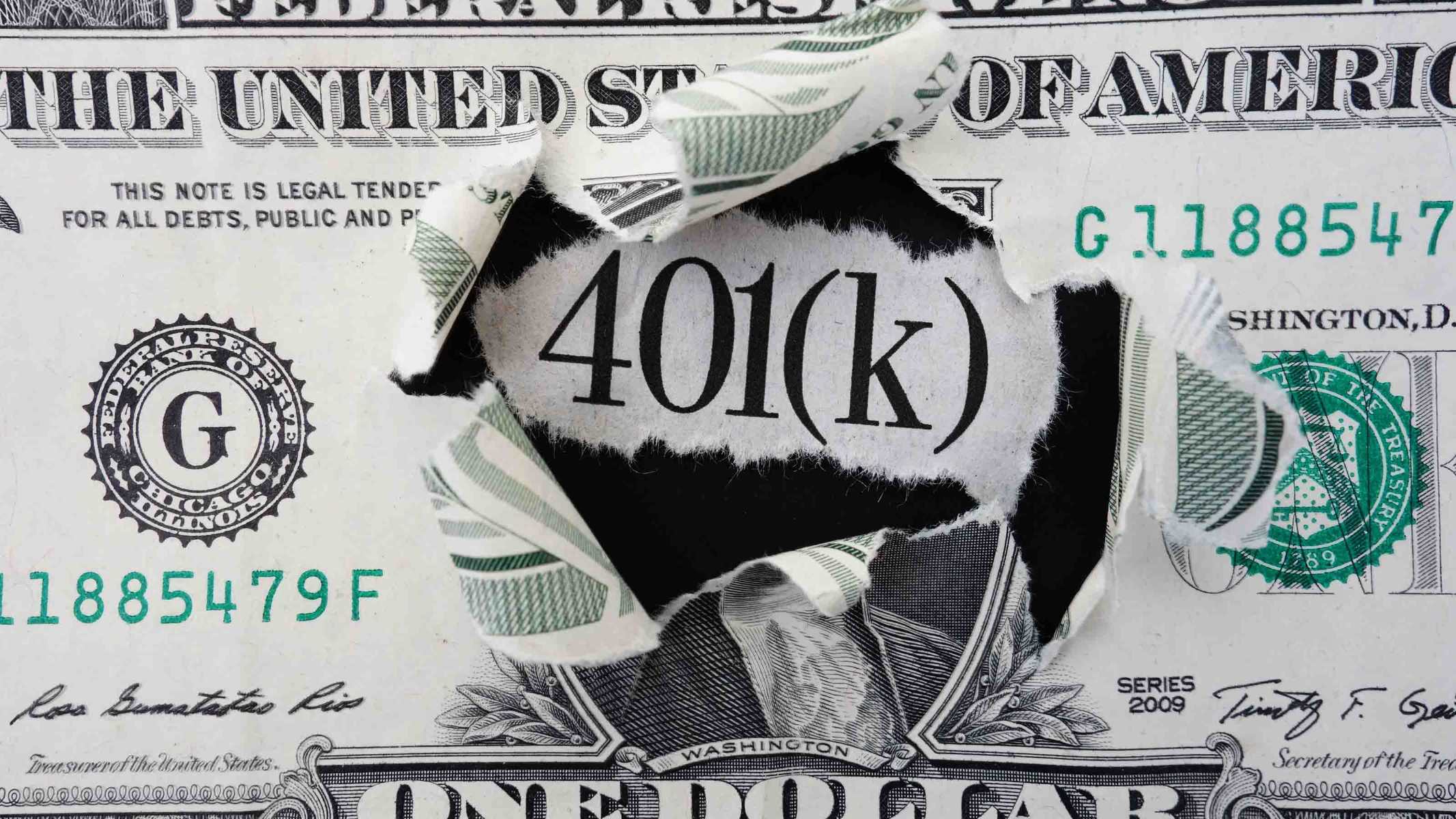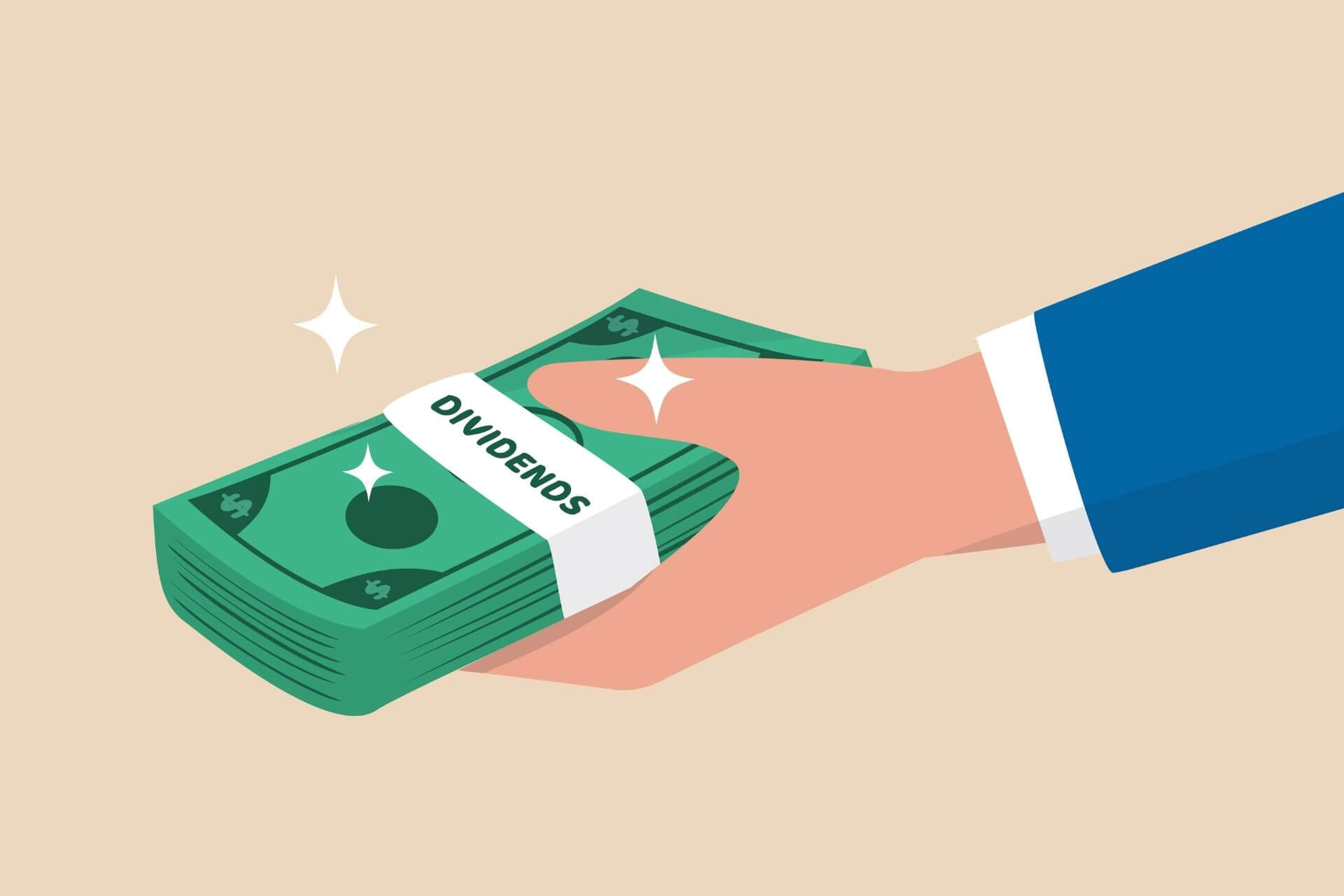

Finance
How Much Dividends Can You Earn With 100K
Published: January 3, 2024
Discover the potential of earning dividends with 100K in finance. Find out how much you can maximize your investments and grow your wealth.
(Many of the links in this article redirect to a specific reviewed product. Your purchase of these products through affiliate links helps to generate commission for LiveWell, at no extra cost. Learn more)
Table of Contents
- Introduction
- Understanding Dividends
- Factors Affecting Dividend Earnings
- Dividend Yield
- Dividend Payment Frequency
- Historical Dividend Performance
- Investing with 100K: Dividend Options
- Stocks with High Dividend Yields
- Dividend ETFs and Mutual Funds
- Dividend Reinvestment Plans (DRIPs)
- Real Estate Investment Trusts (REITs)
- Considerations for Maximizing Dividend Earnings
- Diversification and Portfolio Allocation
- Tax Implications of Dividend Income
- Risks and Challenges of Dividend Investing
- Conclusion
Introduction
Dividends are a key component of a solid investment strategy, providing investors with a steady stream of income. Whether you are just starting out or looking to maximize your returns, understanding how much dividends you can earn with a certain amount of capital is crucial. In this article, we will explore the potential dividend earnings from a $100,000 investment.
Investing $100,000 can open up a world of opportunities, allowing you to potentially generate passive income through dividends. Dividends are typically paid by companies to their shareholders as a portion of their profits. This can be in the form of cash payments or additional shares of stock.
To determine how much dividends you can earn with a $100,000 investment, several factors come into play. These include the dividend yield, dividend payment frequency, historical dividend performance, and the specific investment vehicles you choose.
Understanding these factors will help you make informed decisions about where to invest your $100,000 to maximize your dividend earnings. Whether you are considering individual stocks, dividend ETFs, mutual funds, or real estate investment trusts (REITs), there are various options to explore.
In the following sections, we will delve deeper into each factor and explore the different investment options available for generating dividend income with $100,000. Keep in mind that while dividends can be a great source of passive income, it is important to assess the risks and challenges associated with dividend investing before making any investment decisions.
Now, let’s dive into the world of dividends and discover the potential earnings that await you with a $100,000 investment.
Understanding Dividends
Before diving into the details of how much dividends you can earn with a $100,000 investment, let’s first understand what dividends are and how they work.
Dividends are distributions of a company’s earnings that are paid out to its shareholders. They are typically paid in the form of cash, although some companies may choose to distribute dividends in the form of additional shares of stock or other assets.
Dividends serve as a reward for investors who hold shares in a company. They are a way for companies to share their profits with shareholders and attract potential investors.
Dividends are generally paid on a regular basis, such as quarterly, semi-annually, or annually. The amount of the dividend is determined by the company’s board of directors and is based on various factors, including the company’s profitability, financial health, and growth prospects.
It is important to note that not all companies pay dividends. Some companies, especially younger or high-growth companies, may choose to reinvest their earnings back into the business rather than distributing them to shareholders. These companies may prioritize growth and capital appreciation over immediate dividend payments.
When considering dividend investments, it is important to assess the stability and consistency of a company’s dividend payments. Companies with a track record of consistently increasing or maintaining their dividends are often preferred by dividend investors.
Dividends can provide a reliable and predictable source of income, making them particularly attractive to income-focused investors, retirees, and those seeking passive income. The ability to generate a steady stream of dividends can contribute to financial stability and long-term wealth accumulation.
Now that we have a basic understanding of dividends, let’s move on to the factors that can affect how much dividends you can earn with a $100,000 investment.
Factors Affecting Dividend Earnings
When investing $100,000 to generate dividend earnings, it is important to consider the following factors that can impact the amount of dividends you can earn:
1. Dividend Yield:
The dividend yield is a key metric used to determine the annual percentage return on your investment based on the dividends received. It is calculated by dividing the annual dividend per share by the stock price. A higher dividend yield indicates a higher return on your investment.
For example, if a stock has a dividend yield of 3%, a $100,000 investment could potentially earn $3,000 in dividends annually. Keep in mind that dividend yields can vary significantly among different stocks and investment vehicles.
2. Dividend Payment Frequency:
The frequency at which dividends are paid can affect your dividend earnings. Companies may choose to distribute dividends on a monthly, quarterly, semi-annual, or annual basis. The more frequent the dividend payments, the more often you can receive income from your investment.
Consider your cash flow needs and preferences when selecting investment options based on dividend payment frequency.
3. Historical Dividend Performance:
Evaluating a company’s historical dividend performance can provide insights into its ability to sustain and grow its dividend payments. Companies with a track record of consistently increasing their dividends may be more appealing to investors seeking reliable and growing income streams.
Reviewing a company’s dividend history can help gauge the stability and sustainability of its dividends, which is crucial when generating dividend earnings from a $100,000 investment.
4. Economic and Market Conditions:
Economic and market conditions can have a significant impact on dividend earnings. During periods of economic downturns or market volatility, companies may cut or suspend their dividend payments to preserve cash and weather the challenging conditions.
So, it is important to assess the overall economic and market outlook while considering dividend investments to mitigate potential risks and uncertainties.
By considering these factors, you can make informed investment decisions to maximize your dividend earnings with a $100,000 investment. In the following sections, we will explore different investment options that can help you achieve your dividend income goals.
Dividend Yield
Dividend yield is an essential metric that investors use to assess the potential income generated from their investments. It is calculated by dividing the annual dividend per share by the stock price and expressing it as a percentage.
A higher dividend yield indicates a higher return on investment in terms of dividend income. For example, if a stock has a dividend yield of 4%, it means that for every $100 invested, you would receive $4 in annual dividends.
When investing $100,000, the dividend yield plays a significant role in determining how much you can earn in dividends. Let’s consider an example:
If you invest $100,000 in a stock with a dividend yield of 3%, you can expect to earn $3,000 annually in dividends. However, if you invest the same amount in a stock with a higher dividend yield of 5%, your annual earnings would increase to $5,000.
It’s important to note that dividend yield can vary significantly among different stocks and industries. In general, mature and stable companies, such as those in utilities or consumer staples sectors, tend to offer higher dividend yields. On the other hand, growth-oriented companies may have lower or no dividends at all, as they reinvest earnings back into the business to fuel expansion.
While a high dividend yield may seem attractive, it’s crucial to assess the sustainability and stability of the company’s dividends. A high dividend yield could be a result of the stock price declining, signaling potential risks. Conducting thorough research and analysis is essential to ensure that the company can continue to maintain or increase its dividend payments.
Moreover, it’s important to diversify your investment across different stocks and sectors to mitigate the potential risks associated with relying solely on high dividend yield stocks.
Investing in high dividend yield stocks can be a viable strategy to generate consistent income from your $100,000 investment. However, it’s crucial to strike a balance between dividend yield and other factors, such as the company’s financial health, dividend growth, and overall market conditions.
In the next sections, we will explore additional options for generating dividends with your $100,000 investment, such as dividend ETFs, mutual funds, and real estate investment trusts (REITs).
Dividend Payment Frequency
Dividend payment frequency refers to how often a company distributes dividends to its shareholders. The frequency can vary, and it plays a crucial role in determining the timing and consistency of the dividend income received from your $100,000 investment.
Common dividend payment frequencies include:
1. Quarterly:
Many companies pay dividends on a quarterly basis, meaning you would receive dividend payments four times a year. This frequency provides a regular stream of income throughout the year and allows for better cash flow management.
2. Semi-annually:
Some companies choose to pay dividends semi-annually, resulting in two dividend payments per year. This payment frequency might suit investors who prefer less frequent but larger dividend payments.
3. Annual:
There are companies that pay dividends once a year, usually at the end of their fiscal year. This frequency is less common and may require a longer waiting period for dividend income to be received.
When considering dividend payment frequency, it’s important to align it with your financial goals and income needs. If you rely on the dividend income for living expenses or regular cash flow, a more frequent payment schedule, such as quarterly dividends, may be preferable.
On the other hand, if you have other sources of income and can afford to wait longer for dividend distributions, companies with semi-annual or annual payment frequencies may be suitable for your investment strategy.
It’s worth noting that dividend payment frequency is not the sole criteria for selecting investment options. It’s essential to consider other factors like dividend yield, company stability, dividend growth history, and overall market conditions.
Additionally, investing in dividend ETFs (Exchange-Traded Funds) or mutual funds can offer more flexibility in terms of dividend payment frequency. These investment vehicles typically pool funds from multiple investors and invest in a diversified portfolio of dividend-paying stocks. They often pay dividends on a regular schedule, such as quarterly, irrespective of individual company dividend payment frequencies.
By diversifying your $100,000 investment across different investments with varying dividend payment frequencies, you can create a portfolio that provides a steady stream of income throughout the year.
Now that we have discussed dividend payment frequency, let’s explore the historical dividend performance of companies and its impact on dividend earnings from a $100,000 investment.
Historical Dividend Performance
Assessing a company’s historical dividend performance is a crucial step when considering dividend investments with your $100,000. It provides insights into the company’s dividend payment track record and its ability to sustain and grow dividends over time.
Examining a company’s dividend history can help you evaluate the following aspects:
1. Dividend Consistency:
Reviewing a company’s past dividend payments allows you to gauge the consistency of its dividend distributions. Companies with a history of consistently paying dividends, even during economic downturns, demonstrate a commitment to their shareholders and provide a higher level of confidence in future dividend payments.
2. Dividend Growth:
Analyzing a company’s dividend growth history provides insights into its ability to increase dividends over time. Dividend growth is a sign of a healthy and successful company that is generating increasing profits and returning a portion of those profits to its shareholders.
Investing in companies with a track record of consistent dividend growth can lead to not only a higher dividend income but also potential capital appreciation over the long term.
3. Dividend Sustainability:
Effective assessment of dividend sustainability requires understanding a company’s financial health and its ability to generate sufficient cash flow to support dividend payments. Analyzing financial statements, such as income statements and cash flow statements, can provide insights into a company’s ability to sustain its dividend payments.
It’s important to consider factors such as the company’s profitability, debt levels, free cash flow, and dividend payout ratio (the proportion of earnings distributed as dividends). A payout ratio that is too high may indicate an unsustainable dividend, while a conservative payout ratio may suggest potential for future dividend increases.
By focusing on companies with a strong historical dividend performance, you can increase the likelihood of consistent and growing dividend income from your $100,000 investment.
Researching and analyzing individual companies’ dividend history can be time-consuming and complex. As an alternative, you can consider investing in dividend-focused exchange-traded funds (ETFs) or mutual funds that track a basket of dividend-paying stocks. These funds typically have a team of portfolio managers who research and select companies with a strong dividend track record, providing you with diversification and exposure to a range of dividend-paying stocks.
By examining a company’s historical dividend performance, you can make informed investment decisions and potentially enhance your dividend earnings from a $100,000 investment. In the next sections, we will explore different investment options, including high dividend yield stocks, dividend ETFs, mutual funds, and real estate investment trusts (REITs).
Investing with 100K: Dividend Options
When investing $100,000 to generate dividend earnings, there are several options to consider. Each option has its own set of advantages and considerations, allowing you to tailor your dividend strategy based on your goals, risk tolerance, and time horizon.
1. Stocks with High Dividend Yields:
One option is to invest in individual stocks that have a history of paying high dividends relative to their stock price, resulting in a high dividend yield. These stocks are commonly known as “dividend stocks” and are often found in sectors like utilities, telecommunications, and consumer staples. Researching these stocks and building a diversified portfolio of high dividend yield stocks can potentially generate a significant dividend income from your $100,000 investment.
2. Dividend ETFs and Mutual Funds:
Investing in dividend-focused Exchange-Traded Funds (ETFs) or mutual funds can offer diversification and professional management. Dividend ETFs and mutual funds typically hold a portfolio of dividend-paying stocks selected by the fund managers. These investment vehicles provide exposure to a range of dividend stocks across various sectors and geographies, often with the advantage of lower costs compared to actively managed funds.
3. Dividend Reinvestment Plans (DRIPs):
Consider enrolling in Dividend Reinvestment Plans (DRIPs) offered by companies that pay dividends. DRIPs allow you to automatically reinvest your dividends in additional shares of the same company, effectively compounding your investment over time. This option can be beneficial for long-term investors looking to reinvest their dividend income and potentially increase their overall returns.
4. Real Estate Investment Trusts (REITs):
Another dividend option is investing in Real Estate Investment Trusts (REITs). REITs are companies that own and manage income-generating properties, such as commercial real estate, apartments, or healthcare facilities. By investing in REITs, you can gain exposure to the real estate sector and potentially receive regular dividend payments, as REITs are required to distribute a significant portion of their taxable income to shareholders.
It’s important to note that each dividend investment option comes with its own set of risks and considerations. Individual stock investments may have higher volatility and the risk of potential dividend cuts, while dividend ETFs, mutual funds, and REITs may have diversification benefits but also carry market and industry risks.
To mitigate risks, it’s recommended to diversify your $100,000 investment across multiple dividend options. This can help spread risk, enhance income stability, and take advantage of different investment opportunities.
Additionally, staying informed about market trends, economic conditions, and the performance of the companies or funds you invest in is crucial. Regularly reviewing your portfolio and adjusting your investments accordingly can help optimize your dividend earnings and ensure your investment strategy aligns with your goals.
Now that we have explored various dividend investment options, let’s delve into specific examples of high dividend yield stocks, dividend ETFs, mutual funds, and REITs that you can consider when investing your $100,000.
Stocks with High Dividend Yields
If you’re looking to generate dividend income from your $100,000 investment, investing in stocks with high dividend yields can be a viable option. These stocks offer higher dividend payments relative to their stock price, providing the potential for attractive dividend earnings.
When selecting stocks with high dividend yields, it’s essential to consider the following:
1. Dividend Yield:
Dividend yield is a key metric used to identify high dividend yield stocks. It represents the annual dividend payment divided by the stock price. For example, if a stock is priced at $50 per share and pays an annual dividend of $2, the dividend yield would be 4%. Generally, stocks with dividend yields above the average for the market or sector are considered to have high dividend yields.
2. Dividend History and Consistency:
Research a company’s dividend history and track record of consistently paying dividends. Look for companies that have a history of maintaining or increasing their dividends over time, even during economic downturns. This indicates a commitment to shareholder returns and may suggest a stable and reliable source of dividend income.
3. Financial Health of the Company:
Assess the financial health of the company issuing the dividends. Look at key financial indicators such as revenue growth, earnings stability, and debt levels. A financially strong company is more likely to sustain its dividend payments in the long term.
4. Industry and Market Factors:
Consider the industry in which the company operates and its potential for future growth. Industries such as utilities, telecommunications, consumer staples, and healthcare often have companies that pay higher dividends due to their stable cash flows and predictable earnings. However, it’s important to conduct thorough research and evaluate industry trends to ensure the sustainability of dividends.
Examples of stocks with historically high dividend yields include blue-chip companies such as Procter & Gamble, Coca-Cola, Johnson & Johnson, and other established players. These companies have a long history of consistently paying dividends and are known for their stability and reliability.
Before investing in individual high dividend yield stocks, it’s essential to conduct thorough research, assess your risk tolerance, and diversify your portfolio. While high dividend yield stocks can provide attractive income, they may also carry certain risks, including potential dividend cuts, market volatility, and the impact of economic cycles.
If you prefer a diversified approach without the need to select individual stocks, you may consider investing in dividend-focused exchange-traded funds (ETFs) or mutual funds. These funds hold a portfolio of dividend-paying stocks and provide exposure to a range of companies with high dividend yields, reducing the risk associated with a single stock.
Ultimately, by carefully selecting stocks with high dividend yields and diversifying your portfolio, you can aim to maximize your dividend earnings from your $100,000 investment while managing risk effectively.
Dividend ETFs and Mutual Funds
If you’re seeking a diversified approach to generating dividend income from your $100,000 investment, dividend-focused Exchange-Traded Funds (ETFs) and mutual funds can be attractive options. These investment vehicles pool funds from multiple investors and invest in a diversified portfolio of dividend-paying stocks.
Here are some key points to consider when investing in dividend ETFs and mutual funds:
1. Diversification:
One of the main advantages of investing in dividend-focused ETFs and mutual funds is the built-in diversification. These funds typically hold a basket of stocks from various sectors or regions, reducing the risk associated with investing in individual stocks. Diversification can help mitigate the impact of any single company’s dividend cuts or declines in stock price.
2. Professional Management:
ETFs and mutual funds are managed by investment professionals who conduct research and analysis to ensure the fund’s holdings align with the investment objective. They can provide access to a wide range of dividend-paying companies and adjust the portfolio based on market conditions, financial performance, and dividend trends.
3. Expense Ratios:
Consider the expense ratios associated with dividend-focused ETFs and mutual funds. Expense ratios represent the annual fees charged by the fund managers for managing the portfolio. It’s essential to compare expense ratios when selecting funds to ensure they align with your investment goals and provide value for the services provided.
4. Dividend Reinvestment:
Dividend-focused ETFs and mutual funds often offer dividend reinvestment programs, where dividends received are automatically reinvested in the fund. This can help compound your investment over time and potentially enhance your overall returns through the power of reinvested dividends.
When choosing dividend-focused ETFs and mutual funds, consider factors such as historical performance, dividend growth, risk profile, and the underlying companies held by the fund. Analyze the fund’s investment strategy, track record, and top holdings to ensure they align with your investment objectives and risk tolerance.
Examples of dividend-focused ETFs and mutual funds include Vanguard Dividend Appreciation ETF, iShares Select Dividend ETF, and T. Rowe Price Dividend Growth Fund. These funds typically provide exposure to a diversified portfolio of dividend-paying companies and aim to generate consistent income for investors.
It’s worth noting that, like any investment, dividend-focused ETFs and mutual funds are subject to market risks, including fluctuations in stock prices, changes in dividend policies, and overall market conditions. It’s important to regularly review and monitor your investment portfolio to ensure it aligns with your goals and risk tolerance.
By investing in dividend-focused ETFs and mutual funds, you can benefit from professional management, diversification, and the potential for consistent dividend income from your $100,000 investment.
Dividend Reinvestment Plans (DRIPs)
If you’re looking to maximize the growth potential of your $100,000 investment while generating dividend income, Dividend Reinvestment Plans (DRIPs) can be an attractive option. DRIPs allow you to automatically reinvest your dividend payments to purchase additional shares of the same company.
Here are some key points to consider about DRIPs:
1. Compounding Returns:
By reinvesting dividends through DRIPs, you harness the power of compounding returns. As your dividend payments are used to purchase more shares, your investment grows, and subsequent dividends are based on the increased number of shares. Over time, this compounding effect can significantly enhance the growth of your investment and potentially increase your overall returns.
2. Cost Averaging:
DRIPs also provide the benefit of cost averaging. With dividend reinvestment, you automatically purchase shares at different prices over time, regardless of market conditions. This strategy helps smooth out the impact of market volatility on your investment and potentially leads to a lower average cost per share over the long term.
3. Automatic Reinvestment:
DRIPs eliminate the need for active decision-making regarding dividend reinvestment. Once enrolled in a DRIP, dividend payments are automatically reinvested in the same company’s shares according to the parameters set by the DRIP plan. This hands-free approach allows you to passively build your investment while benefiting from the potential of compounding returns.
4. Long-Term Growth Potential:
DRIPs are particularly suitable for investors with a long-term investment horizon. By reinvesting dividends over an extended period, you can accumulate a larger number of shares, potentially benefiting from the long-term growth of the underlying company. This strategy aligns well with those seeking long-term wealth accumulation and capital appreciation.
It’s important to note that not all companies offer DRIPs, and requirements for participation may vary. Some companies may charge fees or require a minimum number of shares to be eligible for the program. It’s advisable to research and evaluate the terms and conditions of each company’s DRIP before enrolling.
DRIPs can be particularly beneficial for dividend-focused investors who prioritize reinvesting income rather than receiving it as cash. However, it’s important to consider your personal financial goals, cash flow needs, and tax implications before opting for DRIPs.
Enrolling in DRIPs can typically be done through the company’s transfer agent or brokerage firm. You may also consider investing in dividend-focused ETFs or mutual funds that offer automatic dividend reinvestment as part of their investment structure.
By utilizing DRIPs to reinvest dividends from your $100,000 investment, you can potentially accelerate the growth of your portfolio, take advantage of compounding returns, and increase the overall value of your investment over time.
Real Estate Investment Trusts (REITs)
If you’re seeking a different avenue for generating dividend income from your $100,000 investment, Real Estate Investment Trusts (REITs) can be an attractive option. REITs are companies that own, operate, and finance income-generating real estate properties such as commercial buildings, apartments, shopping centers, hotels, or healthcare facilities.
Here are some key points to consider about investing in REITs:
1. Dividend Income:
REITs are required by law to distribute a significant portion of their taxable income to shareholders in the form of dividends. By investing in REITs, you can potentially receive regular dividend payments, often on a quarterly basis. This makes them an appealing option for generating consistent cash flow and dividend income from your $100,000 investment.
2. Diversification and Professional Management:
REITs typically invest in a portfolio of real estate properties across different sectors and geographic locations, providing built-in diversification. By investing in a REIT, you gain exposure to a variety of properties without the need to directly purchase and manage individual real estate assets. Additionally, REITs are managed by experienced professionals who have expertise in acquiring, developing, and managing properties, helping to mitigate the risks associated with real estate investment.
3. Potential for Capital Appreciation:
Alongside dividend income, there is the potential for capital appreciation in REITs. As the value of the underlying real estate properties owned by the REITs appreciates over time, the value of the REIT’s shares can also increase. This potential for growth can contribute to overall investment returns in addition to the regular dividend payments.
4. Different Types of REITs:
REITs can be classified into various categories, including equity REITs, mortgage REITs, and hybrid REITs. Equity REITs own and operate income-generating properties, while mortgage REITs primarily invest in real estate mortgages. Hybrid REITs have a combination of both property ownership and mortgage investments. Understanding the different types of REITs and their specific strategies can help you choose the appropriate ones based on your investment goals and risk tolerance.
Like any investment, REITs carry their own set of risks. Factors such as fluctuations in real estate markets, interest rates, tenant occupancy rates, and macroeconomic conditions can impact REIT performance. It’s important to conduct thorough research, analyze a REIT’s financial health, property portfolio, and management track record before investing.
REITs can be bought and sold on major stock exchanges, just like stocks. You can invest directly in individual REITs or consider investing in REIT-focused exchange-traded funds (ETFs) or mutual funds to gain exposure to a diversified portfolio of REITs.
By investing in REITs, you can potentially benefit from regular dividend income, diversification across real estate assets, and the potential for capital appreciation over time. However, it’s important to carefully assess the risks and conduct due diligence before making any investment decisions.
Considerations for Maximizing Dividend Earnings
When aiming to maximize dividend earnings from your $100,000 investment, there are several important considerations to keep in mind. These factors can help you optimize your investment strategy and enhance the potential for dividend income:
1. Diversification and Portfolio Allocation:
Diversify your investment across different asset classes, sectors, and investment vehicles. By spreading your $100,000 across a range of dividend options such as stocks, ETFs, mutual funds, and REITs, you can reduce the impact of any single investment underperforming. Consider your risk tolerance, investment goals, and time horizon when allocating funds to different dividend investments.
2. Research and Due Diligence:
Thoroughly research companies, ETFs, mutual funds, and REITs before investing. Analyze historical performance, dividend growth, financial health, and risk factors associated with each investment option. Stay informed about market trends, economic conditions, and industry outlooks to make informed investment decisions.
3. Regular Portfolio Review:
Regularly review your investment portfolio to assess its performance, rebalance if necessary, and ensure it aligns with your investment goals. Reevaluate individual holdings and make adjustments based on changes in dividend income, company financials, and economic conditions.
4. Consider Dividend Growth Potential:
Look for companies, ETFs, or mutual funds with a track record of increasing dividend payments over time. Dividend growth can enhance your income stream and potentially outpace inflation, preserving your purchasing power in the long run. Focus on investments that show strong fundamentals, stable earnings, and a commitment to dividend growth.
5. Dividend Tax Implications:
Understand the tax implications of dividend income. Dividends can be subject to different tax rates depending on your country of residence and the type of investment. Consult with a tax professional to help optimize your investment strategy and minimize tax liabilities, ensuring you maximize the after-tax income from your dividend earnings.
6. Assess the Risks:
Be aware of the risks associated with dividend investments. Dividend cuts, market volatility, economic downturns, and changes in interest rates can affect dividend income. Conduct thorough risk assessments and understand the factors that can impact dividend payments from the investments you choose.
7. Consider Dollar-Cost Averaging:
Consider employing a dollar-cost averaging strategy when investing in dividend options. By investing a fixed amount of money at regular intervals, you can mitigate the impact of market fluctuations and potentially achieve a lower average purchase price over time.
By keeping these considerations in mind, you can optimize your dividend earnings from your $100,000 investment. Building a well-diversified portfolio, conducting thorough research, regularly reviewing your investments, understanding tax implications, and managing risk appropriately are key steps towards maximizing dividend income and achieving your financial goals.
Diversification and Portfolio Allocation
Diversification and portfolio allocation are crucial considerations when aiming to maximize dividend earnings from your $100,000 investment. By diversifying your portfolio, you spread your investment across various asset classes, sectors, and investment vehicles, reducing the impact of any single investment’s performance on your overall dividend income. Here’s a closer look at how diversification and portfolio allocation can contribute to your dividend strategy:
1. Spreading Risk:
Diversifying your portfolio helps mitigate risk by reducing exposure to the performance of any single investment. By allocating your $100,000 across different types of dividend options, such as stocks, ETFs, mutual funds, and REITs, you ensure that your dividend income is not solely dependent on the success or failure of a single investment. If one investment underperforms or faces challenges, others in your portfolio can help offset potential losses and maintain a steady income stream.
2. Sector and Industry Allocation:
Diversification extends beyond different types of investments and also includes allocating your funds to diverse sectors and industries. Various sectors perform differently at different times due to market conditions, economic cycles, and industry-specific factors. By allocating your funds across sectors such as technology, healthcare, consumer goods, and energy, you can reduce the impact of downturns in a single sector on your overall dividend income. A well-diversified portfolio provides exposure to different sectors, allowing you to benefit from the potential growth and dividend payments of multiple industries.
3. Investment Vehicle Selection:
Diversification can also be achieved through the selection of different investment vehicles. Alongside individual stocks, diversified dividend-focused ETFs and mutual funds can provide exposure to a basket of dividend-paying companies across various sectors and asset classes. This allows you to benefit from the diversification benefits offered by these investment vehicles, which often have professional management and built-in portfolio diversification. Additionally, including REITs in your portfolio can further diversify your dividend income by introducing exposure to the real estate sector.
4. Balancing Risk and Return:
Portfolio allocation involves balancing risk and return based on your investment goals, risk tolerance, and time horizon. Consider allocating a portion of your $100,000 to investments with higher dividend yields but potentially higher risk, such as individual stocks or small-cap companies. Additionally, allocate a portion to investments that offer more stability and lower risk, such as dividend-focused ETFs, mutual funds, or large-cap companies.
5. Regular Portfolio Review:
It’s important to regularly review and rebalance your portfolio to maintain appropriate diversification. Over time, the performance of different investments may lead to an uneven distribution of assets. By periodically assessing your portfolio’s allocation and making adjustments, you can ensure that your dividend income remains diversified and aligned with your investment objectives. Regular reviews also allow you to consider new investment opportunities and adapt your portfolio to changing market conditions.
Remember, proper diversification and portfolio allocation can help reduce risk, enhance stability, and increase the potential for consistent dividend income. However, it’s essential to conduct thorough research, assess your risk tolerance, and consult with a financial advisor to develop a personalized strategy that aligns with your financial goals and investment needs.
Tax Implications of Dividend Income
Considering the tax implications of dividend income is an important aspect of maximizing your earnings from dividends on your $100,000 investment. Dividend income is generally subject to taxation, and understanding the tax rules can help you optimize your investment strategy. Here are some key considerations regarding the tax implications of dividend income:
1. Taxation of Dividends:
Dividends are typically classified as either qualified or non-qualified dividends for tax purposes. Qualified dividends are subject to lower tax rates, similar to long-term capital gains rates, while non-qualified dividends are taxed at ordinary income tax rates, which are generally higher. The tax rates for qualified dividends are typically more favorable, providing potential tax savings on your dividend income.
2. Holding Period and Requirements:
To qualify for the lower tax rates on dividends, certain holding period requirements must be met. Typically, you must hold the stock for a specified period, which is usually at least 60 days during the 121-day period surrounding the ex-dividend date. Meeting these requirements ensures that your dividends are eligible for the lower qualified dividend tax rates.
3. Tax Bracket Considerations:
Your individual tax bracket is another important consideration. Different tax brackets have varying tax rates, which can impact the amount of tax you owe on your dividend income. If you are in a higher tax bracket, non-qualified dividends may be subject to a higher tax rate, reducing your after-tax dividend income. Understanding your tax bracket can help you plan and optimize your investment strategy accordingly.
4. Foreign Dividend Taxation:
If you hold international dividend-paying investments, be aware of the potential for additional tax implications. Dividends from foreign companies may be subject to foreign withholding taxes, which can reduce the amount of dividend income received. However, many countries have tax treaties in place to mitigate or eliminate double taxation, allowing you to claim a foreign tax credit on your tax return to offset the impact of foreign withholding taxes.
5. Tax-Efficient Investing:
Consider tax-efficient investing strategies to minimize the impact of taxes on your dividend income. Holding dividend-focused investments in tax-advantaged accounts, such as Individual Retirement Accounts (IRAs) or Roth IRAs, can help defer or eliminate taxes on the dividends earned. Additionally, choosing tax-efficient investment vehicles like dividend-focused ETFs or mutual funds can provide benefits by focusing on minimizing taxable distributions.
6. Consult with a Tax Professional:
Given the complexity of tax rules and regulations, it’s advisable to consult with a tax professional or accountant to navigate the tax implications of your dividend income. They can provide guidance based on your specific financial situation, help you maximize available deductions, and ensure compliance with tax laws.
By understanding the tax implications of dividend income, you can better plan your investment strategy and make informed decisions to optimize your after-tax dividend earnings. Consider consulting a tax professional to develop a personalized tax-efficient dividend strategy that aligns with your investment goals and helps you maximize your dividend income from your $100,000 investment.
Risks and Challenges of Dividend Investing
While dividend investing can offer attractive income opportunities, it’s important to be aware of the risks and challenges involved. Understanding these factors will help you make informed investment decisions and manage your $100,000 investment effectively. Here are some key risks and challenges associated with dividend investing:
1. Dividend Cuts or Suspensions:
Companies may reduce or suspend dividend payments due to various reasons, such as economic downturns, poor financial performance, or changes in business strategies. Dividend cuts can negatively impact your income stream and the overall return on your investment. It’s important to conduct thorough research and consider the financial health and dividend history of a company before investing for dividend income.
2. Market and Industry Risks:
Dividend-paying companies operate within specific markets and industries that can face various risks. Economic downturns, industry disruptions, regulatory changes, and technological advancements can impact the performance of companies and their ability to sustain dividend payments. It’s crucial to diversify your dividend investments across different sectors and carefully monitor market and industry trends to protect against concentrated risk.
3. Interest Rate Risk:
Changes in interest rates can affect dividend-paying investments, particularly in sectors such as utilities, real estate, and financial services. When interest rates rise, income-focused investors may shift their investments to fixed-income assets, potentially impacting the demand for dividend-paying stocks and their prices. Understanding interest rate movements and their impact on dividend investments is important to make informed decisions.
4. Inflation Risk:
Inflation erodes purchasing power over time, potentially reducing the real value of dividend income. Companies may increase dividend payments over time to keep up with inflation, but it’s important to select investments that have a track record of increasing dividends at a rate that outpaces inflation. Investing in companies with strong fundamentals, consistent earnings growth, and a history of dividend increases can help mitigate the impact of inflation on your dividend income.
5. Stock Price Volatility:
Dividend-paying stocks can still experience significant price fluctuations in the stock market. Changes in market sentiment, company-specific news, or broader economic factors can cause stock prices to rise or fall. While dividend payments can provide a consistent income stream, the value of your investment can fluctuate. It’s important to consider your investment horizon, risk tolerance, and long-term objectives when investing in dividend-paying stocks.
6. Tax Considerations:
Tax laws and regulations regarding dividend income can change, potentially impacting the taxes you owe on your dividend earnings. Staying informed about tax policies and consulting with a tax professional can help you navigate the tax implications and optimize your after-tax dividend income.
Managing these risks and challenges requires careful research, diversification, and regular portfolio monitoring. By assessing the financial health and dividend track record of companies, being aware of market and industry trends, and understanding the impact of interest rates and inflation, you can navigate these risks and make informed investment decisions.
Dividend investing can be a rewarding strategy, but it comes with inherent risks. It’s important to conduct thorough due diligence, diversify your portfolio, and stay informed about market conditions to maximize your dividend earnings and protect your $100,000 investment.
Conclusion
Investing $100,000 to maximize dividend earnings can provide a steady stream of income and contribute to long-term wealth accumulation. Throughout this article, we have explored various aspects of dividend investing, including understanding dividends, factors affecting dividend earnings, and different investment options to consider.
By considering factors such as dividend yield, dividend payment frequency, historical dividend performance, and tax implications, you can make informed investment decisions. Diversification and portfolio allocation play a crucial role in managing risk and optimizing dividend income. Allocating funds across different asset classes, sectors, and investment vehicles can help ensure a consistent income stream and protect against market volatility.
Investment options such as high dividend yield stocks, dividend ETFs, mutual funds, REITs, and dividend reinvestment plans (DRIPs) offer different opportunities for generating dividend income. Understanding the risks and challenges involved, such as dividend cuts, market fluctuations, and tax implications, is important for effectively managing your dividend investments.
It’s vital to conduct thorough research, regularly review your portfolio, and stay informed about economic and market conditions. Consulting with financial advisors or tax professionals can provide valuable guidance to support your dividend investment strategy.
Remember that dividend investing is not without risks, and no investment strategy guarantees success. It’s important to carefully assess your risk tolerance, investment goals, and time horizon before making investment decisions.
In conclusion, with careful planning, research, and diversification, you can aim to maximize dividend earnings from your $100,000 investment. By continuously evaluating your portfolio and staying informed about market trends, you can navigate the challenges and take advantage of the potential rewards of dividend investing.
Make sure to consult with professionals and explore opportunities that align with your financial objectives and risk tolerance. With prudent decision-making and a long-term perspective, dividend investing can be a valuable strategy to generate income and work towards your financial goals.














